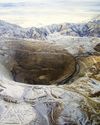Should musicians stop touring?

Taylor Swift's Eras tour has been record-breaking. Not only is it the highest-grossing music tour ever, earning over £760 million, but fans in Seattle, in the US, produced a "Swiftquake" - a ground-shaking tremor that was the same strength as a 2.3 magnitude earthquake while dancing to the song Shake it Off. However, the tour has also set records for its environmental impact.
US electricity company Payless Power estimates that for travel alone, Eras has used up as much energy as 67 homes consume in an entire year. Given the threat of climate change (the long-term change in world weather patterns), should musicians stop touring?
Tour travel
Bands and singers tend to travel by private jet, because venues are often thousands of miles apart. In the UK, music tours generate 85,000 tonnes of greenhouse gas emissions every year. Greenhouse gases, such as carbon dioxide (CO2), are a major cause of climate change, because they trap heat in the atmosphere and make the planet hotter. For the Eras tour, Taylor Swift is estimated to have flown 27,000 miles, producing 511 tonnes of CO₂- the same as charging 33,744,692 smartphones. Not only do the artists have to travel, but their equipment does, too. For Beyoncé's Renaissance tour, over 160 vehicles were needed to move the stage between cities.
Singalong at home
This story is from the {{IssueName}} edition of {{MagazineName}}.
Start your 7-day Magzter GOLD free trial to access thousands of curated premium stories, and 9,500+ magazines and newspapers.
Already a subscriber ? Sign In
This story is from the {{IssueName}} edition of {{MagazineName}}.
Start your 7-day Magzter GOLD free trial to access thousands of curated premium stories, and 9,500+ magazines and newspapers.
Already a subscriber? Sign In

SECRETS OF THE SEAS
Take a deep dive beneath the waves as Melissa Hobson reveals the incredible animals that live in our seas.

Controlling the weather
Is technology being used to change the weather, or is it science fiction?

NEXT STOP: THE FUTURE
All aboard as JD Savage takes the fast track through 200 years of train travel.

The race is on between robots and humans
Twenty-one robots competed against human runners in the Yizhuang half-marathon in Beijing, China in April.

Growing baby corals
Meet the UK scientists giving breeding corals a helping hand.

Could you dig all the way through the planet?
Learn the science behind digging a giant hole.

Fabien Cousteau
Meet the ocean explorer who plans to build a futuristic base under the sea.

Gladiators fought big cats for entertainment
Scientists have found the first physical evidence in Europe that Roman gladiators fought lions.

HEADSCRATCHERS
Hi, I'm Pete, and I love science and the natural world. I work with the Royal Institution (Ri) in London, where you can find exciting, hands-on science events for young people.

Life on another planet?
Scientists have found molecules (groups of atoms) that could point to life on another planet.
